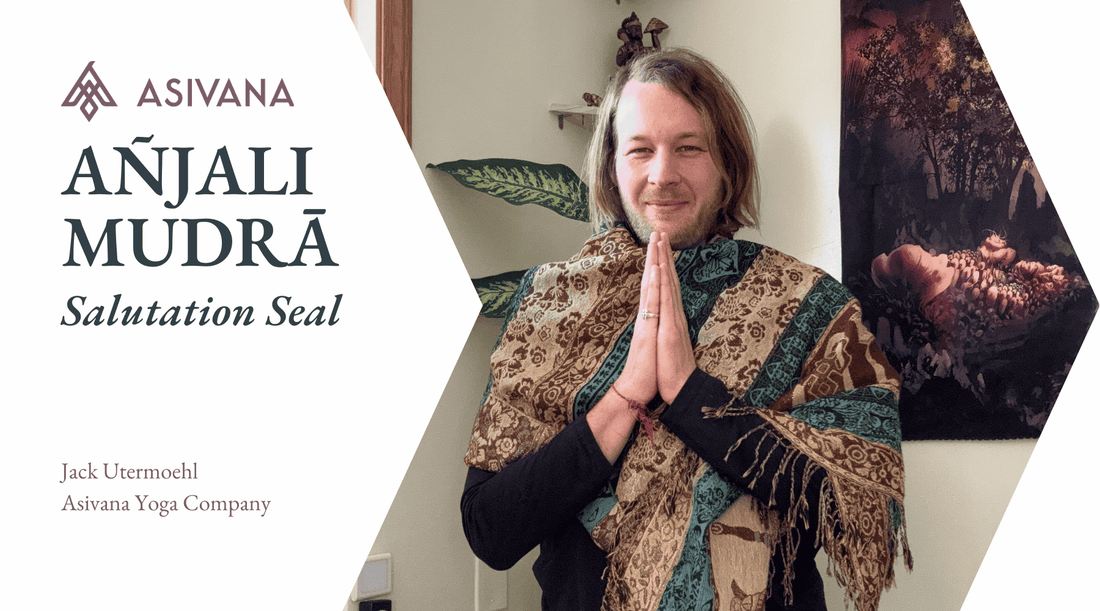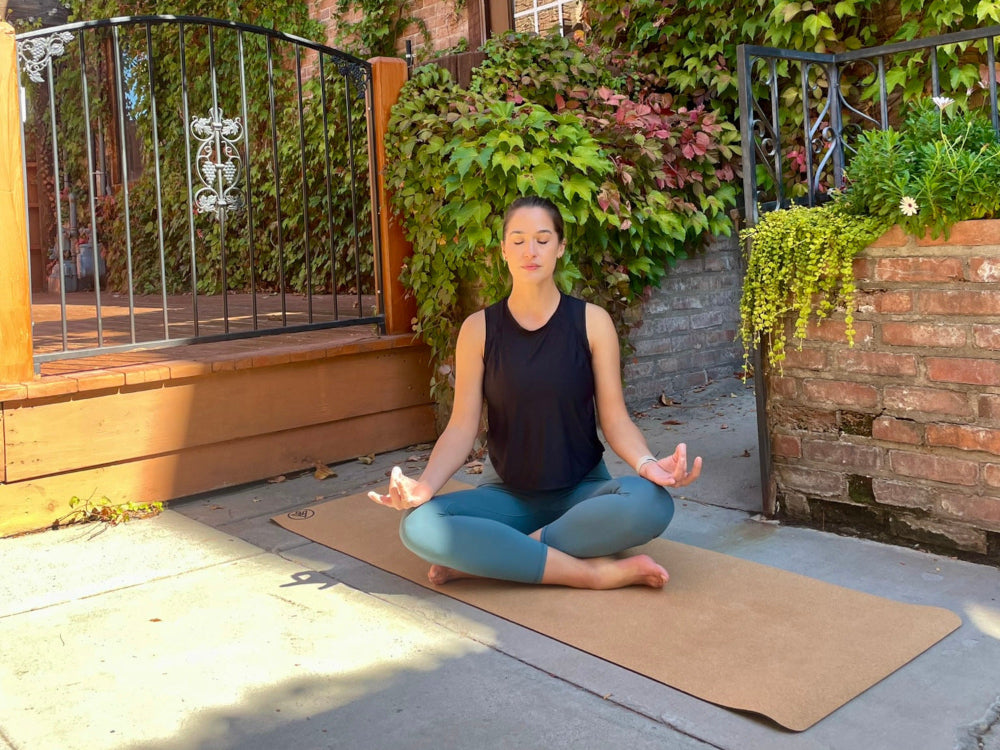
Anjali Mudra - Salutation Seal
Jack UtermoehlShare
Anjali Mudra (Salutation Seal)
Sanskrit Name: Añjali Mudrā - अञ्जलि मुद्रा
English Translation: Salutation Seal
Phonetic Spelling: Ahn-JAH-lee Moo-Drah
Anjali mudra, or the "salutation seal," is one of the most universally recognized mudras in yoga and spiritual practices. Anjali (salutation) is derived from the Sanskrit root anj, which means "to honor" or "to celebrate."
This mudra is commonly used as a gesture of respect, gratitude, and reverence. It is often performed at the heart center, symbolizing the connection between the practitioner’s inner self and the outer world.
In yoga, anjali mudra is used in meditation, pranayama, and asanas (postures) to center the mind and balance energy. It is a gesture of peace and unity, harmonizing body, mind, and spirit. Additionally, it creates a deep sense of humility and respect, both for oneself and others, facilitating a heart-centered connection.
In India, anjali mudra is also used as a general greeting honoring the light within one another. Often accompanied by "namaskar" (greeting).

Instructions to Perform Anjali Mudra
Find a comfortable seated or standing position, ensuring your spine is upright and your body relaxed.
Hand Position: Press the palms together with fingers pointing upward. The thumbs should gently rest against the sternum, with the hands held close to the heart center.
Posture: Sit in Sukhasana (easy pose) or Padmasana (lotus pose) for a seated practice, or stand in Tadasana (mountain pose) for a standing variation.
Breathing Technique: Inhale deeply through the nose, feeling the chest expand. Exhale slowly, allowing tension to release as you focus on the sensation of connection between your palms and heart center.
Duration: Practice anjali mudra for 5-10 minutes during meditation, as a grounding technique before beginning your yoga practice, or in moments of reflection and gratitude.
Benefits of Anjali Mudra
Anjali mudra is a powerful gesture for cultivating inner peace, gratitude, and humility. It encourages a heart-centered connection and helps balance emotional energy.
Physical Benefits: Opens the chest and shoulders, promoting better posture. Helps with calming the nervous system and relaxing the muscles of the upper body.
Mental Benefits: Centers the mind, evokes mental clarity, and cultivates mindfulness by focusing attention inward.
Emotional Benefits: Encourages feelings of gratitude, humility, and compassion. Helps release emotional tension and promotes a sense of inner peace.
Spiritual Benefits: Connects the practitioner with their inner self, creating a sense of unity between self and the divine. It facilitates a deep sense of reverence and spiritual grounding.
Capture your insights and deepen your connection with our Yoga Journal.Elevate Your Mudra Practice
Symbolism and Meaning of Anjali Mudra
Anjali mudra is a symbol of unity and reverence, often used as a gesture of greeting in many spiritual traditions. The pressing of the palms together represents the union of opposites—left and right, feminine and masculine, mind and body. It also symbolizes the meeting of the individual self with the higher self or the divine.
In yogic philosophy, the heart center (Anahata chakra) is the seat of love, compassion, and balance. By placing the hands in anjali mudra at the heart, practitioners encourage the flow of energy within this chakra.
When to Practice Anjali Mudra
Anjali mudra can be practiced at any time, especially at the beginning and end of a yoga practice or meditation session. It is particularly useful during moments of reflection, gratitude, or when seeking to center the mind and balance emotions.
Use this mudra during moments of stress or emotional imbalance to create a calming effect, or as a gesture of respect and connection in your daily life.
A duration of 5-10 minutes is recommended, but even holding anjali mudra for a few moments can help bring awareness and balance to the mind and heart.
Contraindications for Anjali Mudra
Anjali mudra is safe and accessible for all practitioners. There are no significant contraindications for this mudra.
Additional Insights on Anjali Mudra
Affirmations: "I honor and respect the light within me and others." / "I am connected to the love and peace in my heart."
Visualization: While holding anjali mudra, visualize a warm, golden light radiating from your heart center, spreading outward in all directions. This light represents love, compassion, and unity.
Associated Chakras: Anjali mudra primarily activates the Anahata (heart chakra), promoting love, compassion, and balance.
Paired Asanas: Works well with Tadasana (mountain pose) and Sukhasana (easy pose)..
Related Pranayama: Pair with deep, diaphragmatic breathing or ujjayi breath (victorious breath).
Meditation Techniques: Use anjali mudra in mindfulness or loving-kindness meditation to enhance feelings of compassion and self-acceptance.
Variations and Modifications
Alternative Hand Positions: Anjali mudra can be practiced with the hands placed in front of the forehead (brow center) or above the head (crown center) for different energetic effects.
Adaptations for Beginners: Beginners can rest their elbows on a cushion or support to help maintain proper alignment if holding the mudra for an extended period.
—— 🕉 ——

Personal Insights
Anjali mudra transcends cultures, religions, and spiritual practices similar to dharmadhatu mudra and jnana mudra. It is commonly recognized around the world as a sign of reverence, inner peace, and salutations. I am often overcome with the desire to express my gratitude to others with anjali mudra.
To me, it's the union of two expressed through my hands and body. To show this union from two to one is an expression of connectedness between myself and the receiver of the mudra.
Let us know your experience in the comments section below.











